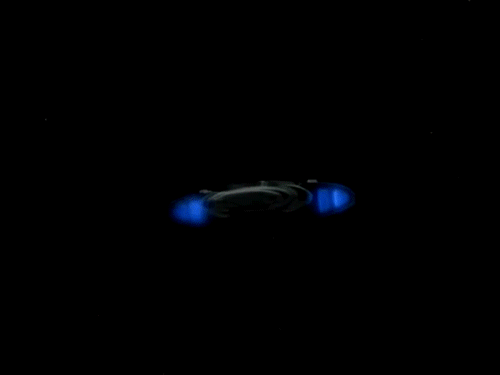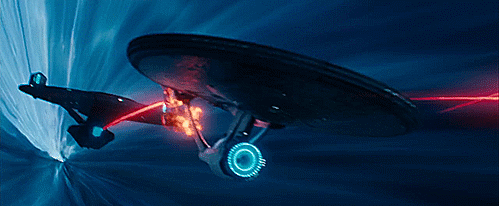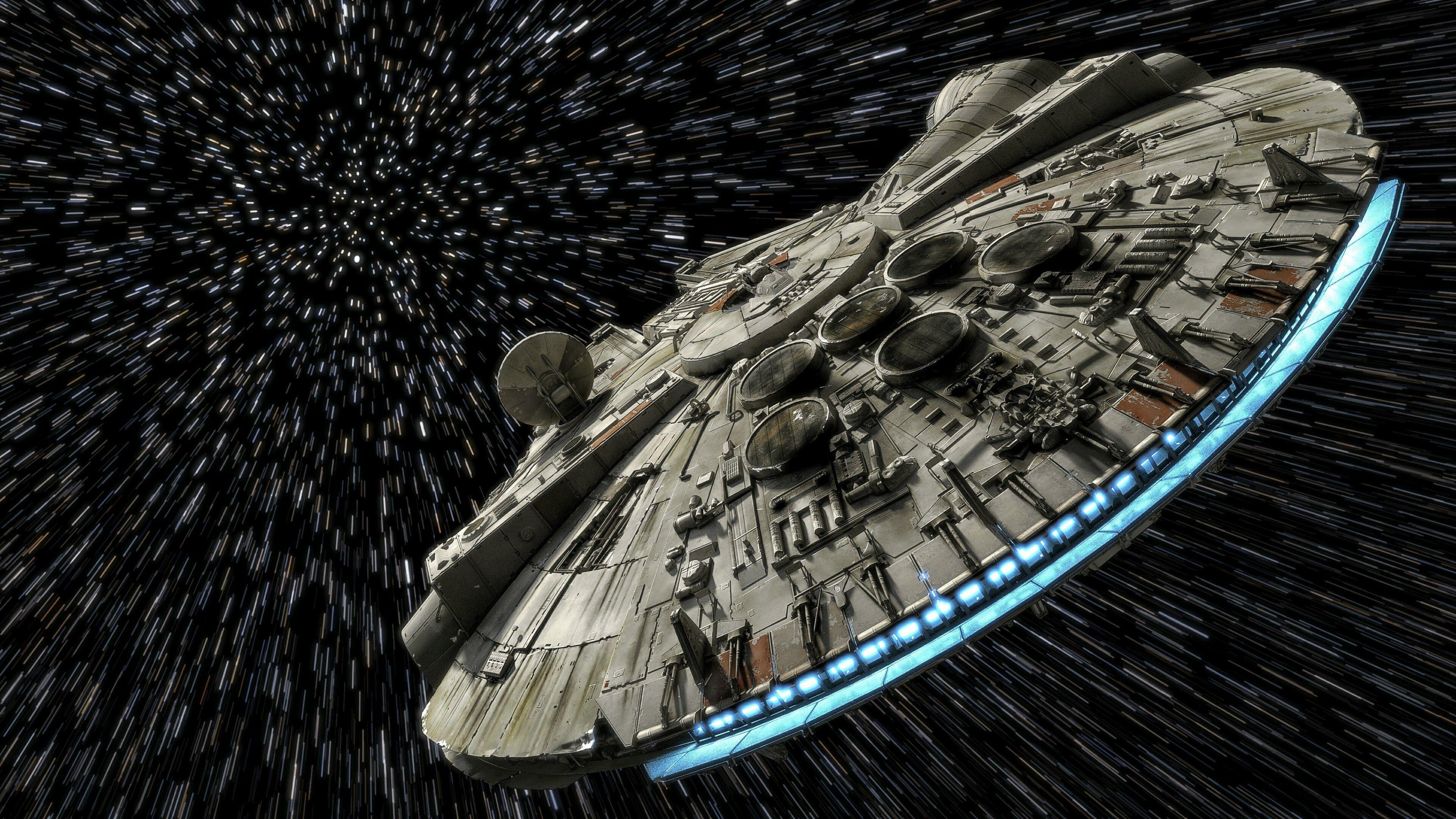
The visuals of FTL travel
There are many different ways sci-fi engages their FTL engines, even in the same universes. I intend to take a look at some of these methods today.
There is no one single way of engaging an FTL-drive. Many shows and movies have their own take on it, and there are even universes where there is more than one method of FTL travel.
Star Trek
The main method of FTL travel is their "warp drive", utilizing a matter/antimatter reaction to form a bubble that moves through space. Once a warp drive is engaged, the ship would visually stretch out, then head off into space. As soon as the ship stops being visible to the naked eye, a flash of light shows up where the ship was headed.

In newer Star Trek content, this is often no longer the case. In the Kelvin movies, a ship would stretch for a longer while than the classic shows, then blast off. It would leave a blue trail after both nacelles.
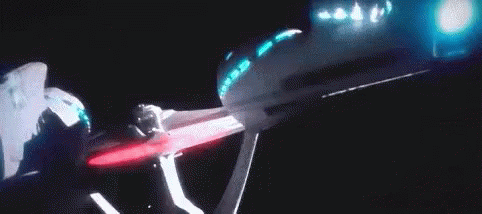
Interestingly enough, this does not appear to always be the case. In the first movie, a fleet heads to Vulcan, only a quick blue flash shows up, after which the ship is gone.

Discovery also has a white flash, but it does not stretch. It does leave a few colors for less than 0.5 seconds.
User Ballyweg made a YouTube video of Star Trek ships entering warp. This does not include the newer series, since the video was made in 2014.


Once at warp, in the classic series there is a static field of stars in the background with varying streaks moving across the screen. The streaks are mostly white. They also often show green and red, however.

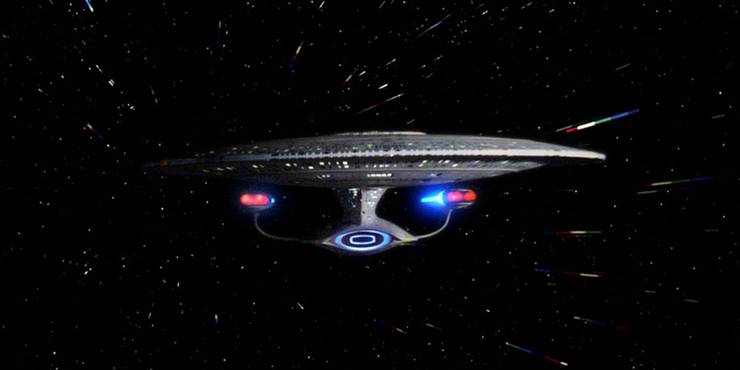

In the Kelvin movies, they are seemingly inside some sort of white tunnel, much like Star Wars.
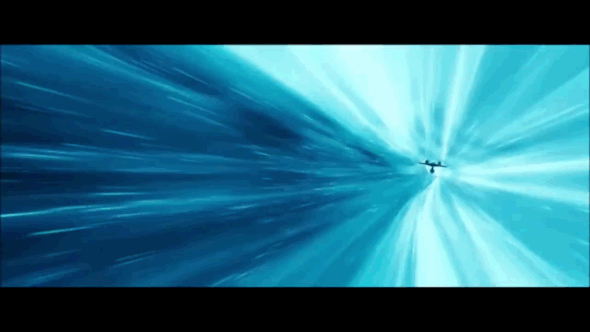
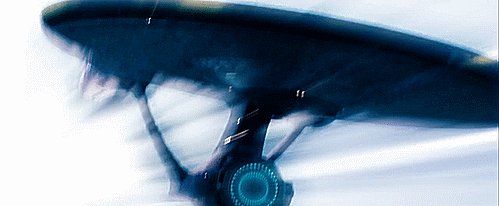
This looks much different from the outside, there is no visual indication of any kind to indicate such a tunnel exists.

Entering warp from the inside has a very unique view, at least in the classic series. I believe Discovery and other modern Trek does not have such a good-looking transition from the inside.
There are many clips in this YouTube video, it has some great looking examples.
There is also the Quantum Slipstream Drive. A technology Voyager attempted to use to get back to the Alpha Quadrant.
At the time Voyager attempted this, the technology was very new and unstable. The technology requires benamite crystals, which are extremely rare.
Voyager detected a phase variance, so they attempted to have a shuttle ride out the waves and send them the corrections. This did not end well for them, resulting in a crash on a class-L ice planet, leading to the deaths of the entire crew other than the two pilots of the shuttle.
The technology is a lot more common in the 32nd century, though benamite crystals are still extremely rare, and in much higher demand.


The Star Trek universe also features a unique form of transport, the displacement-activated spore hub drive. It was an experimental method of FTL travel, using a galaxy-spanning network of spores to appear anywhere, anytime.
This type of travel required a specific type of ship design, the Crossfield-class.
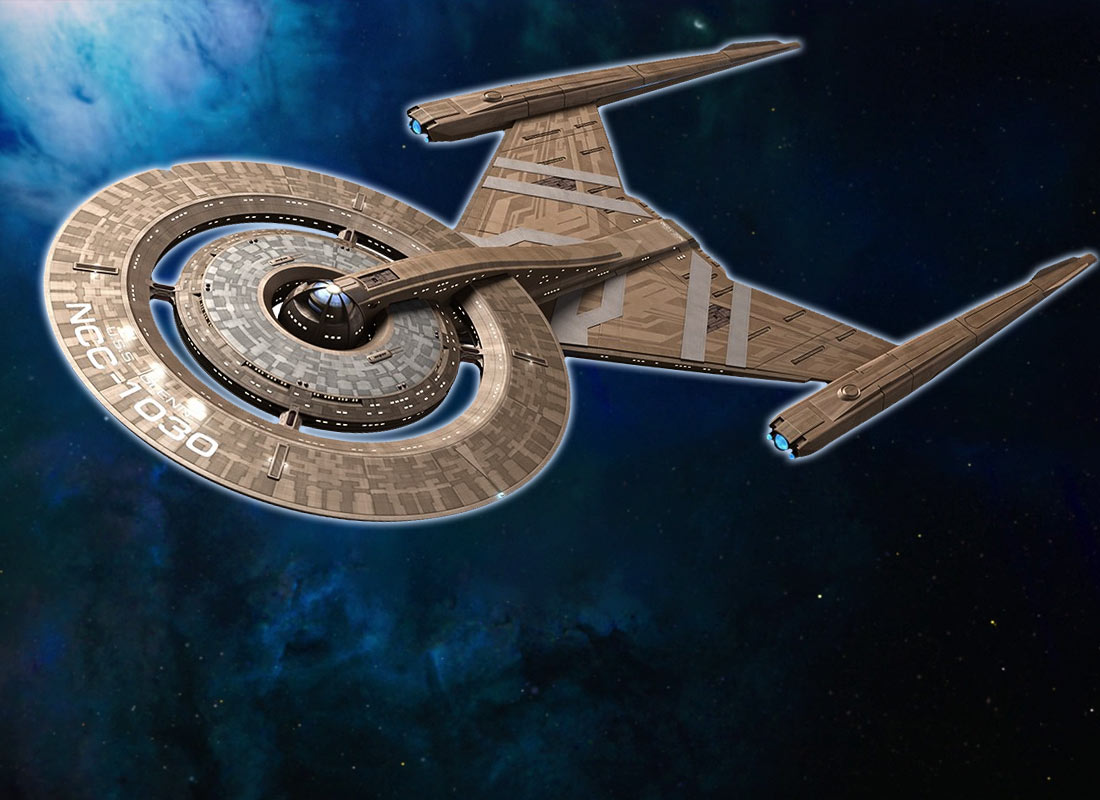
The outer disk would spin, spreading the spores across the ship, allowing it to jump. It would then spin, and "fall" into the spore dimension, exiting the dimension wherever the navigator wishes.

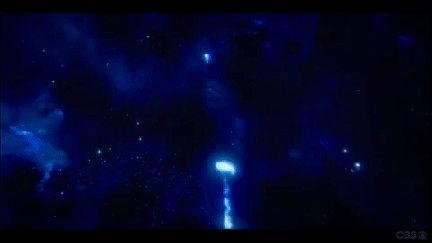
The spore drive isn't perfect. It requires a human interface to be altered with tardigrade DNA and is also a considerable drain on the navigator.
If you have enough data, it is also possible to travel to alternate universes using the spore drive. This puts an even worse strain on the navigator, even leaving commander Stamets, the navigator, in a coma for multiple weeks.

Upon returning from the alternate universe, they also traveled 9 months into the future. It is not known if this can be replicated, since Discovery has not attempted this again, and no other ships were ever equipped with a Spore drive.
There are also other methods of FTL travel. The Traveller was able to move starships at speeds unimaginable, taking the Enterprise to another galaxy in a matter of seconds.
The Caretaker also had an array capable of moving ships 70,000 light-years in a matter of seconds, seemingly doing so without too much effort. It was capable of doing this at a high rate.
Star Wars
Star Wars uses a hyperdrive system. It is not possible to enter it at any one time in any direction, but instead has "lanes" which require a lot of calculation to enter.
This also means it's not possible to go anywhere in the galaxy, but instead, has you go to the closest point possible. See the Wookieepedia page for more info.
In Star Wars, there is no stretching. Instead, it briefly shows the stars accelerating, after which a vessel enters a hyper lane. These lanes look like a circular shaped tunnel.


From an outside perspective, entering light speed simply looks like the vessel accelerating, without any special visual effects.


The Orville
The Orville uses a quantum drive, a method of FTL much faster than Trek's warp drive and Star Wars' hyperdrive combined. Union fleets often have a few ring-like shapes on the back of ships, which are used to charge the drive.
In The Orville's universe, moving at light speed gives the star acceleration effect, with an aqua colored tint on nearby stars.

Engaging the quantum drive first charges each of the behind rings, then propels the ship forward. It leaves a blue, water-like ripple, and a streak behind each of the rings. The same happens when exiting light-speed, just in reverse.

For more info on the quantum drive, check out the wiki page.
Doctor Who
Doctor Who also has FTL travel. The Doctor's TARDIS can move to any point in the universe, moving through a vortex and ending up wherever. There are instances of the door being closed, a lever being pulled, and the door is opened; they are now at their desired location.
The TARDIS is also often shown in the time vortex. I am not sure why this is, as it is clear the travel can be near-instant.
For more information on FTL travel in Doctor Who, see the wiki page.

Thoughts? Ideas? Noticed a mistake?
Send me an e-mail! I'm available at [email protected]

